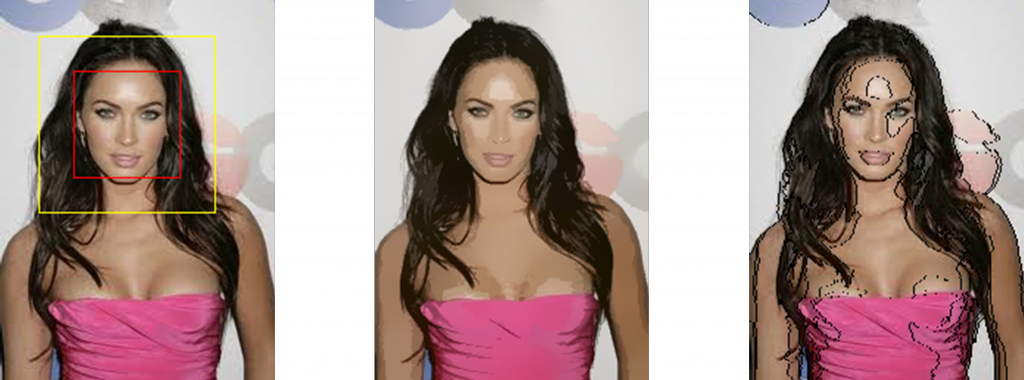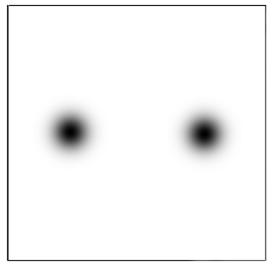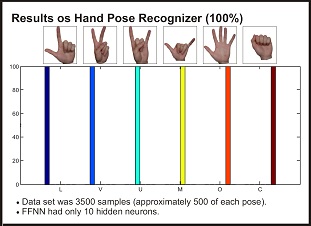#include
using namespace cv;
using namespace std;
void onMouse( int event, int x, int y, int, void* param);
void updateMag(Mat complex);
void updateResult(Mat complex);
Mat computeDFT(Mat image);
Mat createGausFilterMask(Size mask_size, int x, int y, int ksize, bool normalization, bool invert);
void shift(Mat magI);
int kernel_size = 0;
int main( int argc, char** argv )
{
String file;
file = " << SAMPLE FILE >>";
Mat image = imread(file, CV_LOAD_IMAGE_GRAYSCALE);
namedWindow( "Orginal window", CV_WINDOW_AUTOSIZE );// Create a window for display.
imshow( "Orginal window", image ); // Show our image inside it.
Mat complex = computeDFT(image);
namedWindow( "spectrum", CV_WINDOW_AUTOSIZE );
createTrackbar( "Gausian kernel size", "spectrum", &kernel_size, 255, 0 );
setMouseCallback( "spectrum", onMouse, &complex);
updateMag(complex); // compute magnitude of complex, switch to logarithmic scale and display...
updateResult(complex); // do inverse transform and display the result image
waitKey(0);
return 0;
}
void onMouse( int event, int x, int y, int, void* param)
{
if( event != CV_EVENT_LBUTTONDOWN )
return;
// cast *param to use it local
Mat* p_complex = (Mat*) param;
Mat complex = *p_complex;
Mat mask = createGausFilterMask(complex.size(), x, y, kernel_size, true, true);
// show the kernel
imshow("gaus-mask", mask);
shift(mask);
Mat planes[] = {Mat::zeros(complex.size(), CV_32F), Mat::zeros(complex.size(), CV_32F)};
Mat kernel_spec;
planes[0] = mask; // real
planes[1] = mask; // imaginar
merge(planes, 2, kernel_spec);
mulSpectrums(complex, kernel_spec, complex, DFT_ROWS); // only DFT_ROWS accepted
updateMag(complex); // show spectrum
updateResult(complex); // do inverse transform
*p_complex = complex;
return;
}
void updateResult(Mat complex)
{
Mat work;
idft(complex, work);
// dft(complex, work, DFT_INVERSE + DFT_SCALE);
Mat planes[] = {Mat::zeros(complex.size(), CV_32F), Mat::zeros(complex.size(), CV_32F)};
split(work, planes); // planes[0] = Re(DFT(I)), planes[1] = Im(DFT(I))
magnitude(planes[0], planes[1], work); // === sqrt(Re(DFT(I))^2 + Im(DFT(I))^2)
normalize(work, work, 0, 1, NORM_MINMAX);
imshow("result", work);
}
void updateMag(Mat complex )
{
Mat magI;
Mat planes[] = {Mat::zeros(complex.size(), CV_32F), Mat::zeros(complex.size(), CV_32F)};
split(complex, planes); // planes[0] = Re(DFT(I)), planes[1] = Im(DFT(I))
magnitude(planes[0], planes[1], magI); // sqrt(Re(DFT(I))^2 + Im(DFT(I))^2)
// switch to logarithmic scale: log(1 + magnitude)
magI += Scalar::all(1);
log(magI, magI);
shift(magI);
normalize(magI, magI, 1, 0, NORM_INF); // Transform the matrix with float values into a
// viewable image form (float between values 0 and 1).
imshow("spectrum", magI);
}
#include "dft_routines.h";
Mat computeDFT(Mat image) {
// http://opencv.itseez.com/doc/tutorials/core/discrete_fourier_transform/discrete_fourier_transform.html
Mat padded; //expand input image to optimal size
int m = getOptimalDFTSize( image.rows );
int n = getOptimalDFTSize( image.cols ); // on the border add zero values
copyMakeBorder(image, padded, 0, m - image.rows, 0, n - image.cols, BORDER_CONSTANT, Scalar::all(0));
Mat planes[] = {Mat_(padded), Mat::zeros(padded.size(), CV_32F)};
Mat complex;
merge(planes, 2, complex); // Add to the expanded another plane with zeros
dft(complex, complex, DFT_COMPLEX_OUTPUT); // furier transform
return complex;
}
Mat createGausFilterMask(Size mask_size, int x, int y, int ksize, bool normalization, bool invert) {
// Some corrections if out of bounds
if(x < (ksize / 2)) {
ksize = x * 2;
}
if(y < (ksize / 2)) {
ksize = y * 2;
}
if(mask_size.width - x < ksize / 2 ) {
ksize = (mask_size.width - x ) * 2;
}
if(mask_size.height - y < ksize / 2 ) {
ksize = (mask_size.height - y) * 2;
}
// call openCV gaussian kernel generator
double sigma = -1;
Mat kernelX = getGaussianKernel(ksize, sigma, CV_32F);
Mat kernelY = getGaussianKernel(ksize, sigma, CV_32F);
// create 2d gaus
Mat kernel = kernelX * kernelY.t();
// create empty mask
Mat mask = Mat::zeros(mask_size, CV_32F);
Mat maski = Mat::zeros(mask_size, CV_32F);
// copy kernel to mask on x,y
Mat pos(mask, Rect(x - ksize / 2, y - ksize / 2, ksize, ksize));
kernel.copyTo(pos);
// create mirrored mask
Mat posi(maski, Rect(( mask_size.width - x) - ksize / 2, (mask_size.height - y) - ksize / 2, ksize, ksize));
kernel.copyTo(posi);
// add mirrored to mask
add(mask, maski, mask);
// transform mask to range 0..1
if(normalization) {
normalize(mask, mask, 0, 1, NORM_MINMAX);
}
// invert mask
if(invert) {
mask = Mat::ones(mask.size(), CV_32F) - mask;
}
return mask;
}
void shift(Mat magI) {
// crop if it has an odd number of rows or columns
magI = magI(Rect(0, 0, magI.cols & -2, magI.rows & -2));
int cx = magI.cols/2;
int cy = magI.rows/2;
Mat q0(magI, Rect(0, 0, cx, cy)); // Top-Left - Create a ROI per quadrant
Mat q1(magI, Rect(cx, 0, cx, cy)); // Top-Right
Mat q2(magI, Rect(0, cy, cx, cy)); // Bottom-Left
Mat q3(magI, Rect(cx, cy, cx, cy)); // Bottom-Right
Mat tmp; // swap quadrants (Top-Left with Bottom-Right)
q0.copyTo(tmp);
q3.copyTo(q0);
tmp.copyTo(q3);
q1.copyTo(tmp); // swap quadrant (Top-Right with Bottom-Left)
q2.copyTo(q1);
tmp.copyTo(q2);
}


























